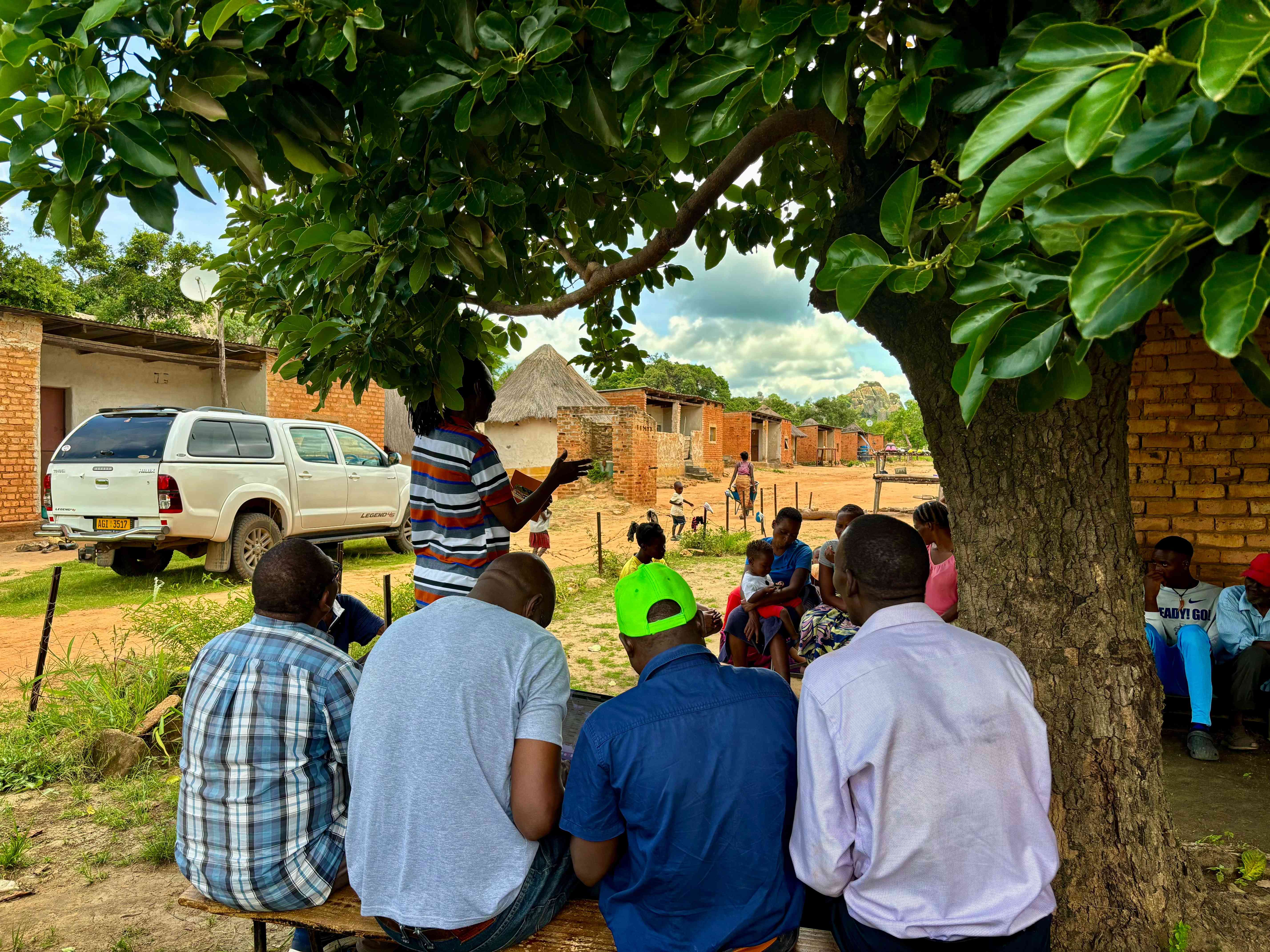
Former farm workers living in compounds on resettlement farms in Mvurwi are some of the most marginalised people across the land reform farms.
‘Success’ is limited by a set of major structural constraints that individuals cannot overcome by themselves.
We conducted success rankings in two farmworker compounds in Mvurwi – Hariana and Ruia D – involving 19 men and 23 women overall.
These were by far the most challenging of our success ranking workshops as participants rightly said that success is impossible for them.
There are just too many barriers.
They have little land (usually only 1ha); they are obliged to engage in exploitative labour arrangements; employment opportunities are seasonal and not guaranteed; living arrangements in former farm compounds are crowded with poor conditions and overall people feel marginalised due to their limited political standing, often not even accepted as ‘real’ Zimbabweans, as previous generations had come from Zambia, Mozambique and Malawi.
Moreover, farmworkers are also cut off from off-farm opportunities, with many having limited education (often linked to low incomes).
For others, the shock of losing family members through HIV/Aids in the early 1990s and 2000s has had a long-lasting impact on the fortunes of some families (illustrated through lack of social networks).
- Helping your teen develop good study habits
- DJ Tira takes Kadoma through Gqom lessons
- DJ Tira takes Kadoma through Gqom lessons
- Legal matters: Why it is important to register estates
Keep Reading
Drug and alcohol abuse amongst former farmworker communities was also seen as important in holding people back.
Nevertheless, once discussions started it became clear that there were patterns of difference between households.
Not all former farmworkers are the same by any means. While the ranks cannot in any way be compared with others, as everyone is so much poorer – in terms of both assets and income – some are clearly doing better than others.
Some former farmworkers, for instance, have been able to accumulate particular assets – beds, furniture, TVs and so on for the house, a few cattle, limited farming equipment (ploughs, scotch-carts, water pumps, grinding mills etc), some have cars and many are proud that they are sending kids to school.
Such successes are hard-earned, and usually coming from selling high quality tobacco and other high-value crops (sweet potatoes, tomatoes etc.), making use of their farm labourer skills from before on their small plots.
As many acknowledged, the situation – even if extremely challenging – is a considerable improvement from the situation on former white-owned farms.
In comparing our lists of compound dwellers from 2014 and today, there were 33 and 51 remaining in Hariana and Ruia areas.
Many had moved on and, even within households, there has been much flux, often with the next generation taking over the compound house.
Some had passed on, or moved to other farms, some to town in search of jobs, while others had established themselves as A1 farmers, integrating into the wider community.
This latter option is rare, however, as the A1 land holders limit access to new land for farmworkers, preferring to keep a labour pool close by.
Without the opportunity to subdivide a plot and create new homes those now adult children who have not inherited a compound dwelling may move to small ‘teapot’ houses (one room houses with a dome shape).
For many of those attending the workshop at Hariana and Ruia compounds, the overall story was about lack of ‘success’. Two main features were highlights.
First was access to land. As one male participant commented, “For you to be successful you have to have access to land.
How can one become successful without land? I do not have land.” Another observed, “Settlers [those in the A1 areas] have 6 ha of land.
There is no farmworker with 6ha of land.” Those who were considered ‘successful’ were leasing in additional land.
Most relied on 1ha plots that they were given, or small pieces of land within the compounds.
The second concern mentioned was lack of inputs. As one participant noted, “As farmworkers, we are the last to receive farm inputs from pfvumvudza when all the settlers have received theirs. We have to rely on piece jobs to get inputs.”
In terms of overall characteristics of the success groups, SG1 households have stands/houses in town; they have cars; have some cattle; own grinding mills; have some off-farm income (from chrome mining, for example); educated their children; have adult children and other relatives who help them through remittances; are skilled farmers and generate a surplus and, crucially, lease in additional land.
SG2 households by contrast are trying to farm but have inadequate assets. Finally, SG3 households have limited or no land, have no inputs, no draft power, have very limited assets and some live in ‘cabins’.
Of the 32 households in Hariana who were present at both time periods, most were stuck in lower success group ranks, mostly in SG3.
The extreme lack of assets and general poverty was very evident. A few had moved upwards, largely through farming success, mostly through leasing in land from other A1 farms to add to their 1 ha plots.
Farm workers are very skilled tobacco growers/curers and can make money on small areas.
In sum, former farm workers (or more accurately worker-farmers or farmer-workers) in Mvurwi who are still based in the compounds have limited options and their opportunities for accumulation and so ‘success’ is highly constrained.
They exist in a subservient relationship with the A1 farmers, which, even if different to the exploitative employment relationship they had with the former white farmer, still means the scope for improving livelihoods is limited. Farmworkers remain discriminated against and marginalised.
Opportunities are limited because they have small land areas, usually the concessionary 1 ha plots allocated early in the land reform period.
Extending this area to be able to farm properly is difficult and requires negotiation with A1 farmers and setting up leasing arrangements in exchange for ‘consultancy’ advice or direct payment.
This is only an opportunity for a few as wages for piece work on nearby farms are so low, and barely enough for subsistence.
Those living in compound houses or rooms cannot build more houses as they have no land, so it is difficult to see where accumulation can come from.
Poor education also limits opportunities for off-farm accumulation via stable off-farm jobs. Not surprisingly, most former farm workers sit at the bottom of the ranks, persistently over time, including across generations, remaining in SG3.
*This is the sixth blog in a series exploring ideas of ‘success’ in post-land reform Zimbabwe. The blog has been written by Ian Scoones and Tapiwa Chatikobo, with inputs from Felix Murimbarimba (who facilitated the workshops), Godfrey Mahofa, Jacob Mahenehene, Sydney Jones (Matobo), Moses Mutoko (Masvingo), Makiwa Manaka (Gutu), Vincent Sarayi/Peter Tsungu (Mvurwi) amongst many others in each of our sites. This blog first appeared on Zimbabweland.











